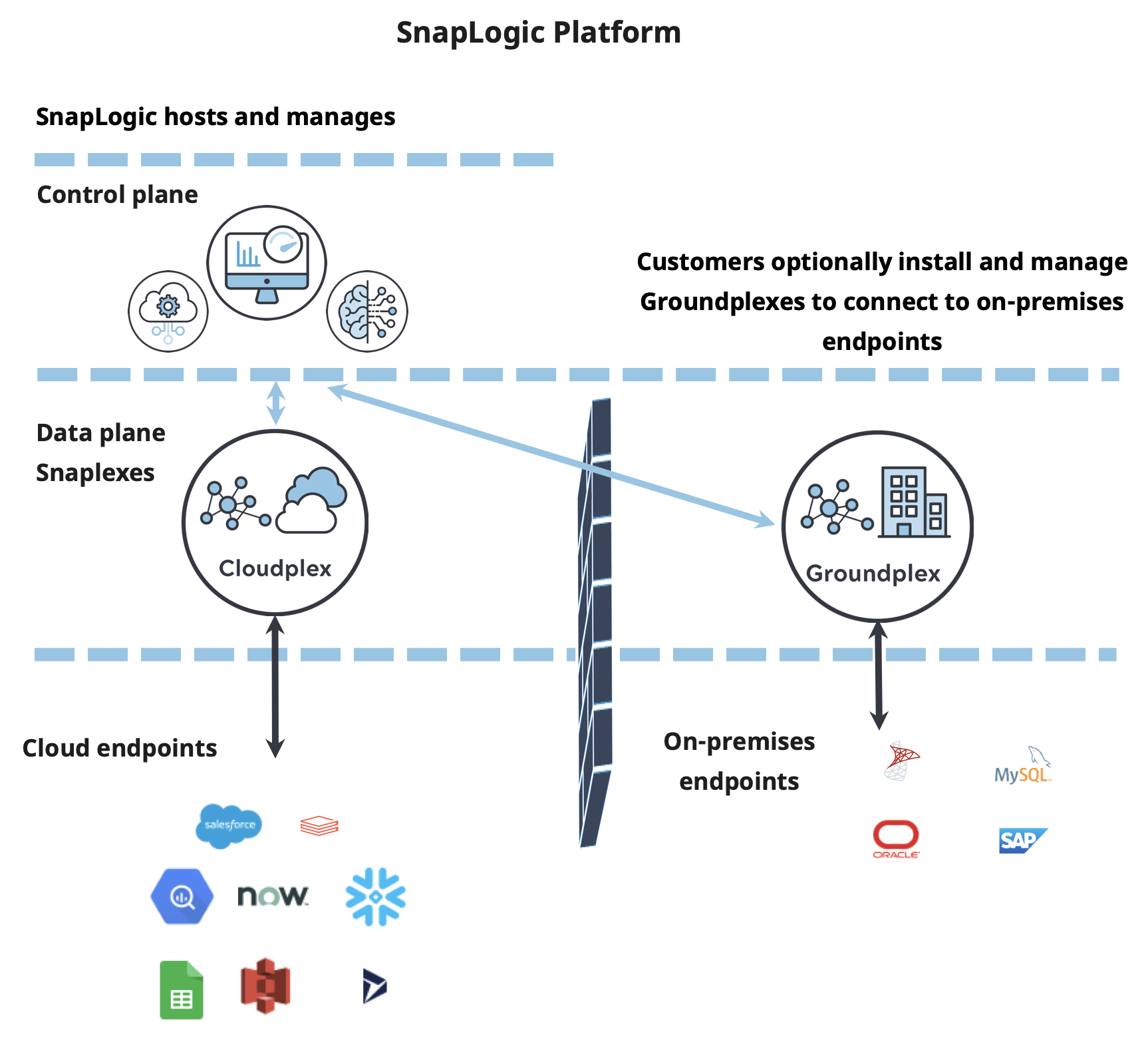Platform components
The SnapLogic Platform includes the apps that you use to create, deploy, and monitor integrations and the runtime environment that executes integrations. The Platform uses the common JSON format for data exchange.
The architecture divides processing between two components, the control plane and the data plane. Users log in to the control plane that hosts their environment:
- Global:
https://elastic.snaplogic.com. Some customers also have access to the user acceptance environment,https://uat.elastic.snaplogic.com, where releases are staged before they are rolled out to the production control plane. - EMEA:
https://emea.snaplogic.com. Some customers also have access to the user acceptance environment,https://uat.emea.snaplogic.com, where releases are staged before they are rolled out to the production control plane.
Platform architecture
The following illustrates the relationship between the control plane and the data plane:

- The control plane:
- Provides the interface that users log into to access Designer, SnapGPT, AgentCreator, APIM, and AutoSync.
- Stores environment configuration settings.
- Stores the assets that users create to integrate and orchestrate data, such as APIs, pipelines, tasks, and the credentials necessary to access endpoints.
- Provides controls for self-managed Snaplexes.
- Includes runtime and infrastructure dashboards.
- The data plane consists of Snaplexes, the engines that execute pipelines:
- SnapLogic manages Cloudplexes, which can connect to cloud-based data endpoints, such as Salesforce and Marketo. To connect to on-premises endpoints with a Cloudplex, you must configure the endpoints to trust SnapLogic IP addresses.
- Organizations can optionally deploy self-managed Groundplexes, on-premises or in a private
cloud. Groundplexes:
- Can connect to data endpoints behind your firewall, such as MySQL or Oracle on-premises databases.
- Give you the option to use advanced security features such as enhanced encryption and secrets management.
Snaplexes have multiple nodes that communicate with each other for load balancing, scaling, and resiliency. Execution nodes handle API and task requests. FeedMaster nodes support streaming Ultra Task requests. They direct Ultra Task requests to the execution nodes and queue requests when all execution nodes are at capacity. The following illustrates a Snaplex with one FeedMaster node and three execution nodes:

Learn more about Snaplexes.
Browser support
The SnapLogic Platform can be best experienced on the following browser versions:
- Microsoft Edge 128 or later
- Google Chrome 128 or later
- Mozilla Firefox 130 or later


